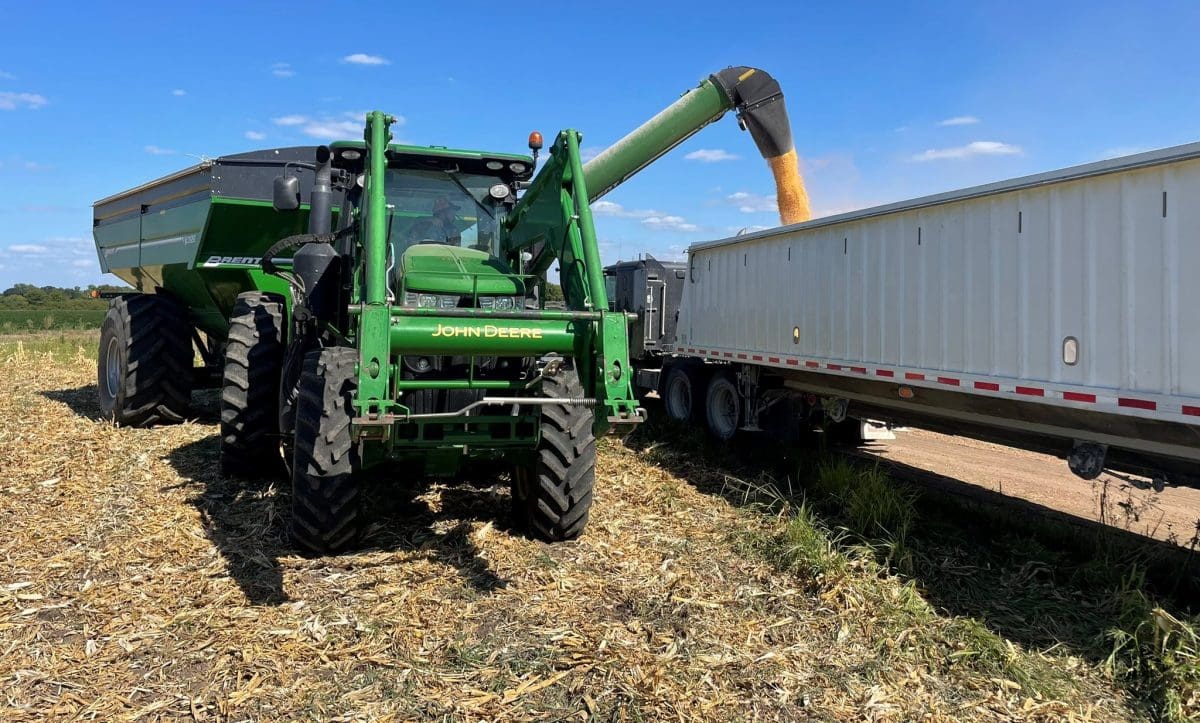
Harvesting corn in Kansas. Photo: Kody Mullins
THE United States corn crop is set to be the smallest since 2019, with the results of this year’s Pro Farmer crop tour confirming what many in global grain markets had feared for some weeks. At the same time, it has dashed any hope that the US could provide some global supply relief in the wake of poor yields in Europe, Ukraine’s export woes, and the escalating summer-crop production issues in China.
The primary goal of the Pro Farmer Crop Tour is to provide the industry with accurate growing-season information about potential corn and soybean yields at the state and regional levels for the upcoming harvest season. More than 100 “scouts”, made up of farmers, media representatives, agribusiness professionals and Pro Farmer staff, were organised into teams that fanned across 20 pre-determined Midwest routes, sampling almost 3400 individual fields over four days commencing on Monday of last week.
The eastern leg begins sampling in western Ohio before working its way across Indiana, Illinois, eastern Iowa and southern Minnesota. The western leg starts in the southern reaches of South Dakota, then moves through eastern Nebraska, western Iowa and into southern Minnesota. Both teams concluded this year’s crop tour in Rochester, Minnesota, on Thursday night, after which the data was collated, and report generated.
The sampling and measurement regimes are designed to get representative results for crop districts and states across the Midwest, rather than concentrating on individual fields or counties. Scouts measure three ears of corn or count pods on three soybean plants from just one location in each field surveyed. The assigned routes for each team have been consistent over many years to ensure comparability and credibility.
Estimate under USDA for corn
Pro Farmer released the eagerly awaited yield and production projections after the close of US futures trade last Friday afternoon. The industry advisory service pegged the US corn yield at 168.1 bushels per acre (10.55 tonnes per hectare) and total production at 13.759 billion bushels (Bbu), 349.5 million tonnes (Mt). This is 600Mbu, 15.2Mt and 4.2 per cent lower than this month’s USDA yield and production forecasts of 175.4bu/ac (11t/ha) and 14.359Bbu (364.7Mt) respectively.
The soybean numbers were much more in line with the most recent USDA projections. The Pro Farmer yield came in at 51.7bu/ac (3.48t/ha) compared to the department’s August figure of 51.9bu/ac (3.49t/ha). This put production at 4.535Bbu (123.4Mt), almost identical to the USDA’s number of 4.53 Bbu (123.3Mt).
In 2021, Pro Farmer pegged the US corn and soybean crops at 15.116Bbu and 4.436Bbu respectively. The USDA’s final harvest figures for the 2021-22 marketing year came in at 15.115Bbu for corn and 4.435Bbu for soybeans.
Can east counter west?
The burning question leading into the 30th annual crop tour was whether there will be enough corn production east of the Mississippi River to offset lost output west of the Mississippi River, where the growing season this year has been hotter than usual and extremely dry. In the end, the answer was quite emphatic: Not within a bull’s roar!
While the crop in the eastern corn belt appears to have stabilised this month, yields in the western corn belt have taken a hiding since the beginning of August, with some districts experiencing their worst drought conditions in over a decade.
The gloomy production outlook comes after spring row-crop plantings came in lower than expected, with US farmers leaving more land unplanted than anticipated. The USDA’s Farm Service Agency (FSA) released its initial prevent plant estimate on Monday last week. It estimated that 1.27Mha of corn were not planted across the main 11 corn-growing states compared to 220,000ha last season. This is the third-biggest corn prevent plant area in the last seven years, primarily due to adverse planting conditions in the spring; extremely dry in some regions and far too wet in others.
US corn futures rallied on Friday, ahead of the release of the Pro Farmer crop forecasts. The September contract closed at US668.75 cents per bushel, up 1.71pc on the day. This followed a 1.24pc retraction on Thursday and a 6.3pc rally in the first three days of the week. The market has basically been on a five-week rally totalling 18.5pc since the most recent contract low of 564.25c/bu on July 22. However, it is still 14pc below the contract high of US778c/bu set on May 16.
Last week’s Crop Progress data added to the market stimulus as the corn ratings continue to decline. With better rains across the corn belt, the market had been expecting a slight improvement in conditions, or at the very least a steady prognosis. But the crop continued the decline, down two percentage points to 55 per cent good-to-excellent. Nebraska saw the biggest decline, followed by Illinois, down five and three percentage points, respectively.
Global consumers had been counting on a bumper US corn crop to offset lower global grain supplies, but a string of troubled harvests around the world point to a continuation of tight supplies and high food costs. The latest European Commission Union crop estimates put member state production down 6.5Mt, or almost ten per cent, to 59.3Mt. Ukraine corn may be finding a pathway to the international market, but it is well behind historical volumes.
And now, severe drought in China is threatening its summer crop production, particularly rice. There is a growing belief that China will need to import additional wheat to meet the food shortfall. Purchases from Australia and France have been ramping up in recent weeks. The big question is whether this issue spills over into higher Chinese corn imports to meet domestic demand as the drought forces an internal reallocation of food and feed resources.



HAVE YOUR SAY